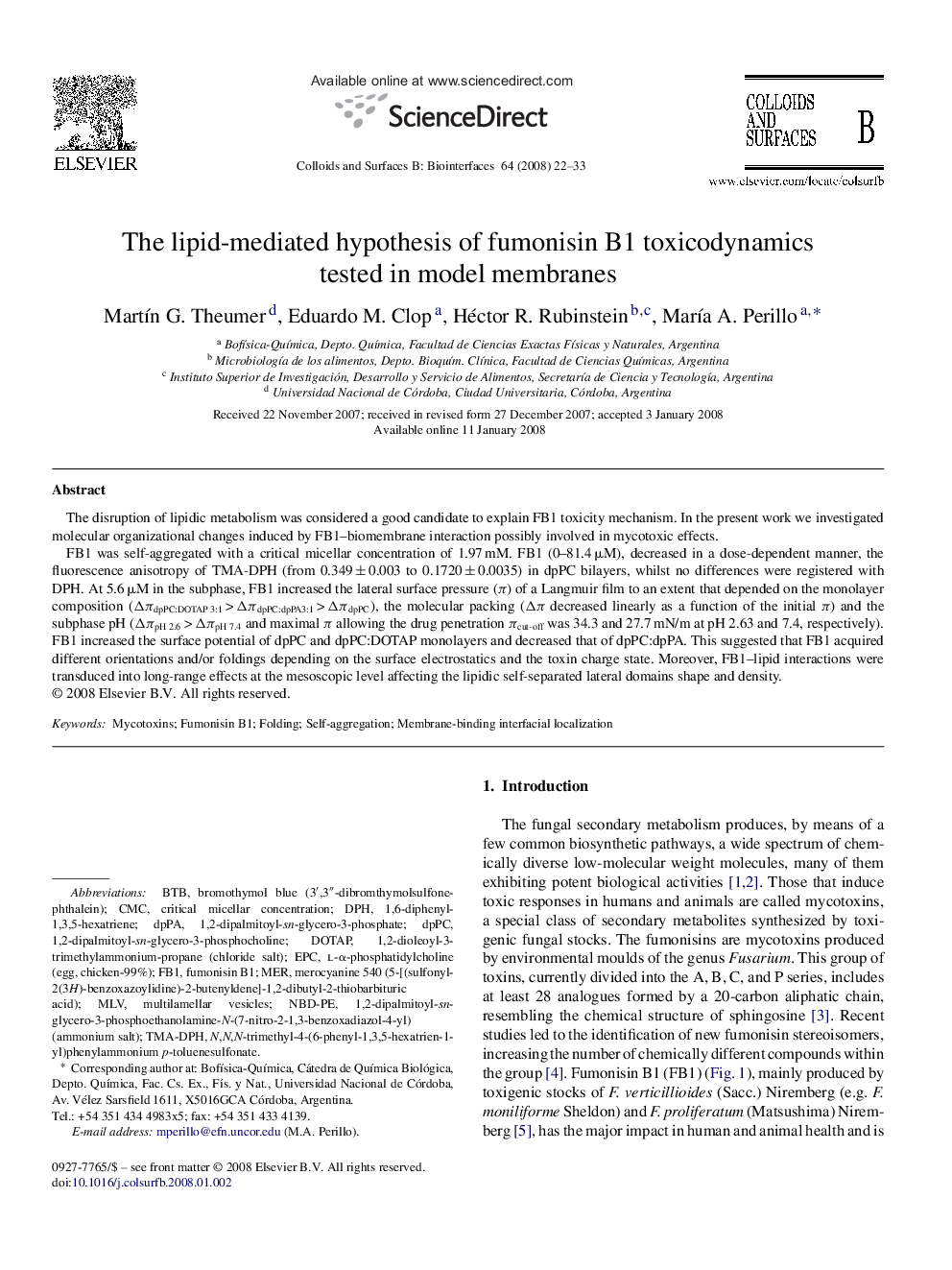| Article ID | Journal | Published Year | Pages | File Type |
|---|---|---|---|---|
| 602179 | Colloids and Surfaces B: Biointerfaces | 2008 | 12 Pages |
The disruption of lipidic metabolism was considered a good candidate to explain FB1 toxicity mechanism. In the present work we investigated molecular organizational changes induced by FB1–biomembrane interaction possibly involved in mycotoxic effects.FB1 was self-aggregated with a critical micellar concentration of 1.97 mM. FB1 (0–81.4 μM), decreased in a dose-dependent manner, the fluorescence anisotropy of TMA-DPH (from 0.349 ± 0.003 to 0.1720 ± 0.0035) in dpPC bilayers, whilst no differences were registered with DPH. At 5.6 μM in the subphase, FB1 increased the lateral surface pressure (π) of a Langmuir film to an extent that depended on the monolayer composition (ΔπdpPC:DOTAP 3:1 > ΔπdpPC:dpPA3:1 > ΔπdpPC), the molecular packing (Δπ decreased linearly as a function of the initial π) and the subphase pH (ΔπpH 2.6 > ΔπpH 7.4 and maximal π allowing the drug penetration πcut-off was 34.3 and 27.7 mN/m at pH 2.63 and 7.4, respectively). FB1 increased the surface potential of dpPC and dpPC:DOTAP monolayers and decreased that of dpPC:dpPA. This suggested that FB1 acquired different orientations and/or foldings depending on the surface electrostatics and the toxin charge state. Moreover, FB1–lipid interactions were transduced into long-range effects at the mesoscopic level affecting the lipidic self-separated lateral domains shape and density.
